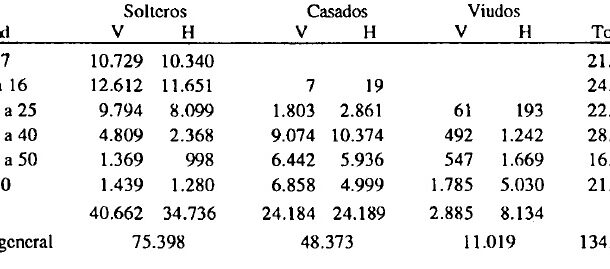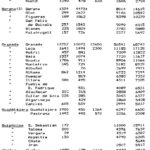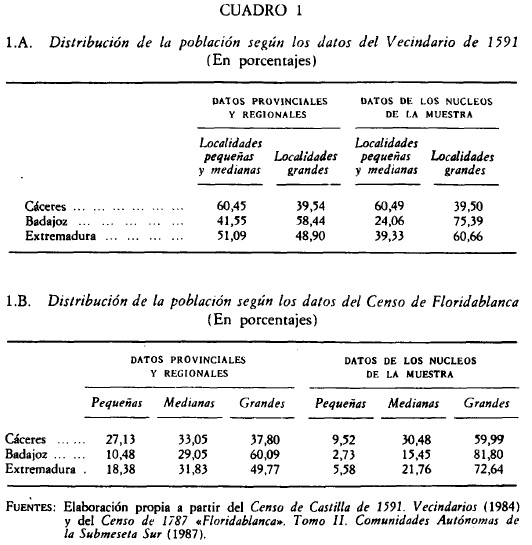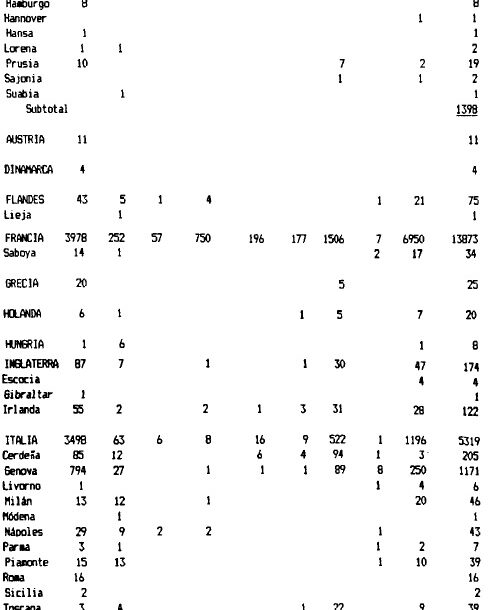
The long-range approach to Spanish demography since the 16th century is a complex task when it comes to providing solid data. Not only because of the pre-statistical period that the historian has to deal with, but also because of the difficulty of the sources. This table is divided into conventional dates in order to provide a clear systematisation. From 1600 onwards and as far as the Castilian cities are concerned, the census of the Crown of Castile carried out in 1591 is preserved, the purpose of which was the distribution of the Millones service. However, it does not include Granada, even though it had been incorporated into Castile a century earlier. Other circumstances involve the provinces of the Basque Country, Aragon and Valencia. The former are not included as they are exempt from tax, nor are the territories included in Aragon, Catalonia, Valencia and Navarre. The population of Navarre was counted in 1553 (data collected by Tomás González); in Valencia and Aragon the count was carried out after the expulsion of the Moors in 1609; another problem, apart from the dates and origins of the data, is the diversity of family and administrative units used as a basis for the censuses. Neighbourhood censuses from 1700 onwards have two counts: the Campoflorido census carried out between 1712 and 1714 for the whole of Spain except the Canary Islands and the Balearic Islands. This neighbourhood count has been criticised by historians of the population, who consider it to be far removed from the real figures. In 1752 the same exercise was carried out for the Castilian towns through the Cadastre of the Marquis de la Ensenada. Between 1800 and 1850, the Floridablanca census, carried out in 1786-87, was considered to be the best of those carried out during the Ancien Régime. As for 1850, the data from the 1857 census are transcribed.
Colección: Estadísticas
Proyecto: 3. Mundo rural y mundo urbano en la formación de la identidad europea., 4. Familia, vida cotidiana y desigualdad social en Europa.
Cronología: XVII, XVIII, XIX
Ámbito: Educación Secundaria, Bachillerato, Universidad
Enlace: https://www.adeh.org/revista/1988,%201/P%20Correas,%20VI,%201,%201988,%20pp%205-23.pdf
Tipo de recurso: Estadística
Formato: Tabla
Fuente: Correas, Pilar, «Poblaciones españolas de más de 5.000 habitantes entre los siglos XVI y XIX», Revista de Demografía Histórica, vol. 6, nº1, 1988, pp. 5–23.
Idioma: Castellano
Fecha: 1988
Propietario: Álvaro Romero González (Modernalia)
Copyright: © Pilar Correas © Revista de Demografía Histórica
Resumen: Poblaciones en España que superan los 5,000 habitantes desde el siglo XVII hasta la primera mitad del siglo XIX
Imagen
Etiquetas







